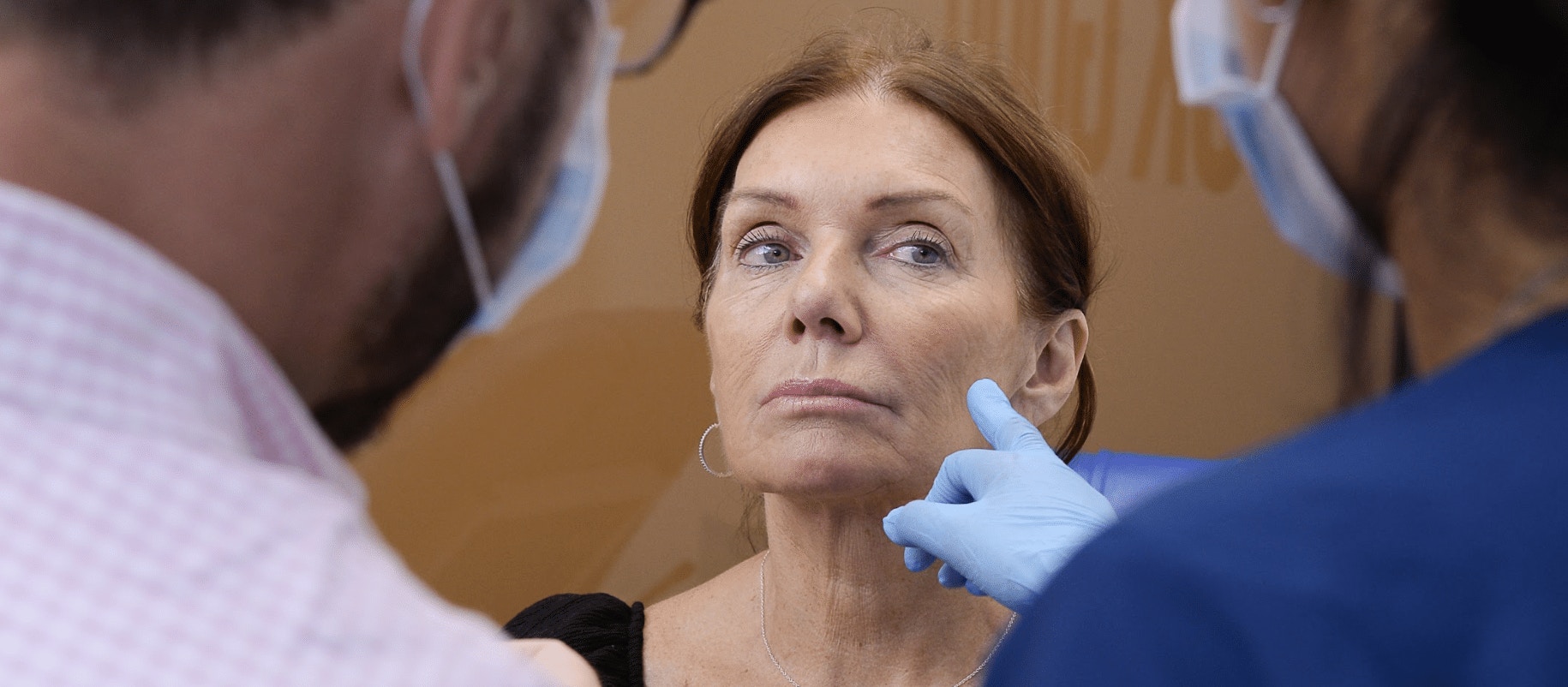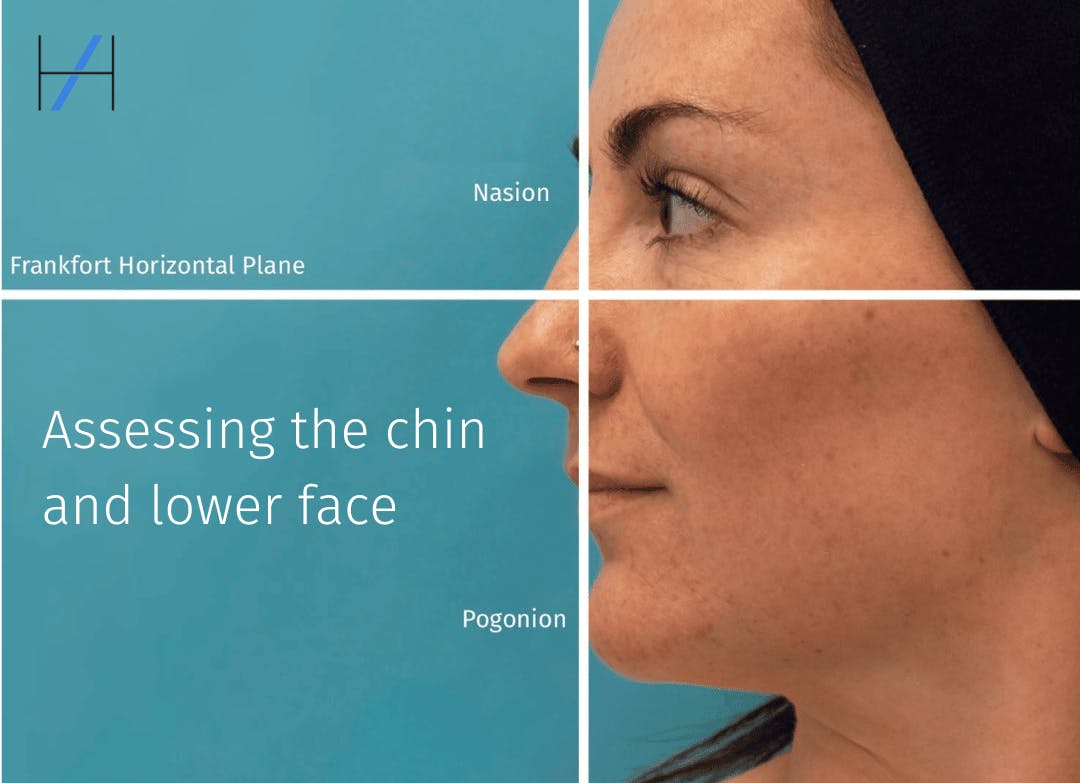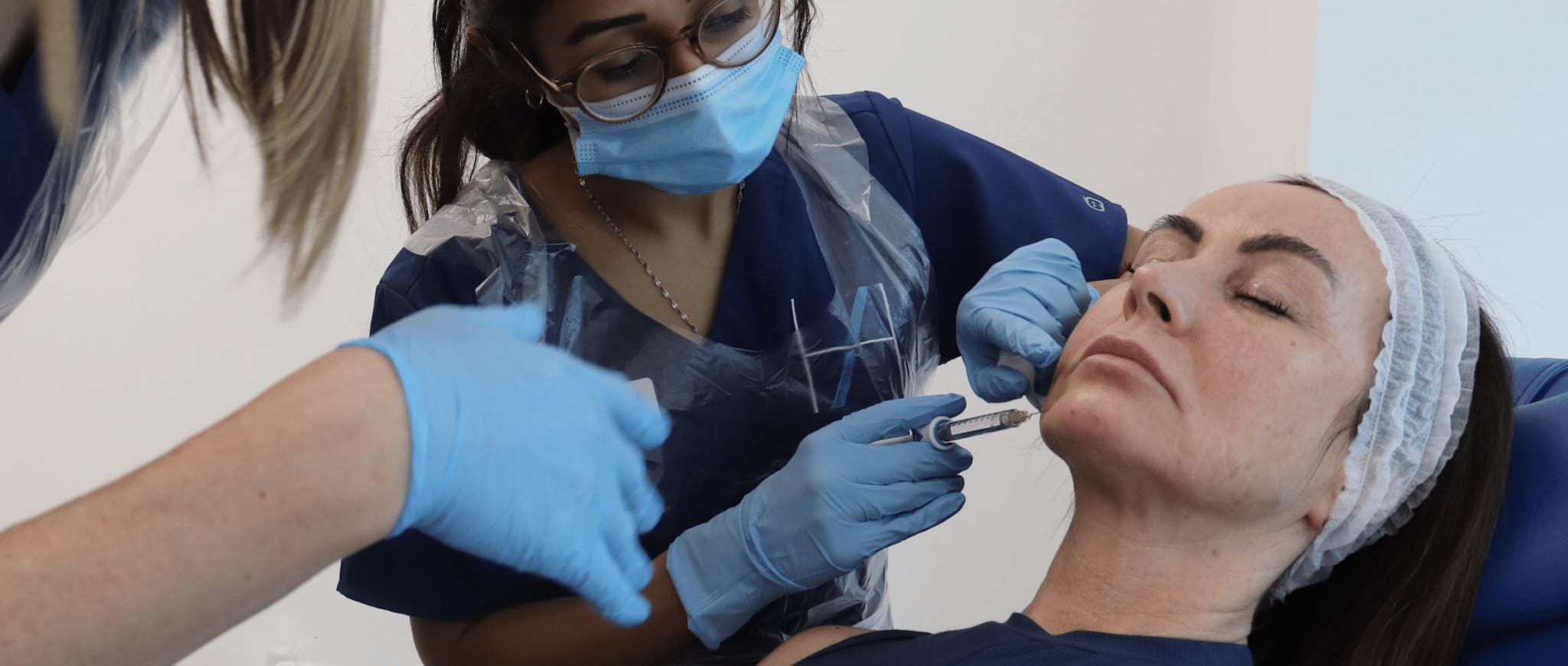Chin And Jawline Filler For Mature Aesthetics Patients

We have recently received queries regarding chin and jawline filler for mature aesthetics patients.
Given the lower face plays such a key role in facial ageing, we spoke to cosmetic nurse prescriber, Shantel Noble to find out more.
Shantel is a Level 7 graduate and clinical trainer at Harley Academy, in addition to having her own London medical aesthetics practice.

HOW CAN CHIN AND JAWLINE FILLER HELP MATURE PATIENTS IN PARTICULAR?
“As we know there are many facial age-related changes we encounter,” notes Shantel. “Broadly speaking our structural support depletes in the form of fat pad atrophy, bone resorption, dermal glycosaminoglycans (GAGS) and fibroblast depletion amongst other attributing factors.”
She adds, “This leads to decreased lower face definition for our mature patients. As such it becomes a common concern and area of complaint.”
“We typically see the pronunciation of jowls, or a loss of definition and shape. This occurs at the gonial angle in particular and along the lower border of the face. Jawline and chin filler can help to visually disguise or reduce the appearance of jowls and redefine the lower face,” explains Shantel.
“It’s important to note that filler treatments alone will not reverse significant skin laxity,” she points out. “Alternative device based treatments or surgical intervention may be required for patients with considerable skin laxity. As always, volume replacement and treatment to the upper two thirds should be addressed first. Ensure this is restored prior to commencing lower face treatments.”

WHAT SHOULD AESTHETICS PRACTITIONERS LOOK FOR WHEN ASSESSING THEIR PATIENTS FOR CHIN AND JAWLINE FILLER?
“Volume loss and potential treatments in the upper two thirds should be systematically
addressed and augmented first,” instructs Shantel. “Consider the facial shape we want to achieve for our patient as augmenting the jawline and chin can significantly alter this.”
When treating female patients and those who wish to have a more traditionally feminine appearance, she advises considering the Triangle of Youth. “Their bizygomatic distance should be wider than their bigonial distance to ensure their facial shape remains feminised.”
For male filler patients and those who wish to have a more traditionally male appearance, Shantel offers the following advice. “We can have this distance between cheeks and jawline be the same or the jawline may be even slightly wider. More specially, for the chin we need to consider our horizontal thirds to see whether the chin itself needs lengthening.”
“Furthermore, to assess the side profile and potential projection required, we need to identify the Frankfort horizontal plane.”
You can find out how to do this in our article How to Assess the Chin and Lower Face.
Lastly, Shantel recommends considering “whether we are masculinising or feminising depending on the patient’s gender, concerns and/or goals”. This is something you should discuss fully during clinical consultation and should not be assumed.

WHAT TOOLS AND FILLER PRODUCTS ARE BEST USED HERE?
In terms of fillers, Shantel advises, “Soft tissue fillers for the jawline and chin are highly cross linked products. At Harley Academy we use the Juvéderm Vycross range from which you can use either Voluma or Volux.”
The syringes above will come with the correct needles for their products. For all SPBS’s I would use a 27g needle. For the layer 2 cannula work I use a 25g cannula.
Cannula length you can use either 38mm or 50mm. I personally prefer 38mm as I find I have more control. However, that will sometimes mean more entry points as my cannula length will only allow me to get so far. Many other practitioner’s will use 50mm along the jawline.

WHAT ARE THE BEST INJECTING TECHNIQUES TO USE FOR CHIN AND JAWLINE FILLER?
“Treating the jawline and the chin will often require two separate techniques,” Shantel notes. “I will explain my approach.”
“You’ll notice I start with all bony treatments first on to layer 5 before commencing the layer 2 aspect of the treatment. Volumes will differ from patient to patient but typically, in my experience, you will require a minimum volume of 2-3+ml to augment a chin and jawline collectively.”
How Shantel treats the chin and jawline
“Firstly I augment the chin on to layer 5 using supraperiosteal bolus (SPB) injections,” she tells us. When treating female patients I wish to keep the volume and curvature of the chin in line with the inner canthus – the width of the nose.
“For males my borders become the width of the mouth and I can create a much more squared, defined shape in comparison to the softer curve associated with a more feminine appearance.”
“Next I address the pre-jowl sulcus using SPB injections,” she continues.
“At the gonial angle I use an SPB injection. In females this is typically around 0.3ml or less,” she advises, noting that this is obviously patient dependent. “For males, I have in the past used up to 0.5ml per SPB bilaterally.”
“We can use larger bolus volumes typically for males as creating additional width and definition at the gonial angle can be masculinising. Thus this is generally considered aesthetically pleasing for men and male presenting patients.”
“Now I move into layer 2 where I use a cannula and a retrograde linear thread technique,” Shantel explains. “This aspect of the treatments creates definition along the jawline. It’s important to avoid any area where the patient has heaviness in the form of jowls.”
“From the anterior aspect of the jowl towards the chin I use a retrograde linear thread and further augment the chin. I also treat the pre-jowl sulcus in layer 2 simultaneously. You can address the mental crease here at the same time. However, if doing so I recommend a 50mm cannula instead of a 38mm,” she directs.
“Now in the opposite direction I go from the other side of the jowl towards the gonial angle with my cannula. Starting at the back angle of the jaw, I deposit my product again in a retrograde linear thread motion.”
As her final step, Shantel recommends you “apply Savlon or an antiseptic post treatment balm along the jawline and chin. Then massage from behind your patient using your thumb and index finger.”
KEY CHIN AND JAWLINE FILLER INJECTING ADVICE
Shantel’s 3 top tips
1. “Always use your non-injecting hand to support along the jawline or chin as you are injecting. This applies whether you’re using boluses or retrograde threads. It ensures the product is sitting exactly where you wish for it to be and doesn’t spread down underneath the jawline.”
2. “We are treating on top of the jawline and not underneath it. Sometimes this can be a common misconception.”
3. “Confirm that your tool is in layer 2 by tenting it towards yourself. You should very clearly see its outline.”
Top 3 chin and jawline filler mistakes trainees make and how to avoid them
1. “Over-masculinising a feminine jawline by over-pronouncing the gonial angle. Or, failing to first identify whether the patient’s bizygomatic distance is wider before commencing treatment. Smaller boluses and full facial assessment can prevent these mistakes.”
2. Poor patient selection. “Patients with subcutaneous fat around their jawline will not be good candidates for treatment.”
3. “Patents with moderate to severe skin laxity may require device based skin tightening treatments and/or surgical intervention either alongside or instead of soft tissue fillers.”

LEARNING SAFE AND EFFECTIVE CHIN AND JAWLINE FILLER TECHNIQUES
If you’re a doctor, dentist, nurse or midwife looking to learn how to administer chin and jawline fillers safely and effectively, read on.
Chin and jawline filler is covered in our industry-leading Level 7 Diploma in Botox & Dermal Fillers. This Ofqual-regulated, Master’s level qualification designed to prepare you for confident, well-informed and safe aesthetic practice. From anatomy to injecting, our expert mentors support and guide you towards attaining effective and reproducible, natural-looking results. Our Level 7 Diploma course is open to intermediate and experienced healthcare professionals who have completed foundation learning in aesthetic medicine.
We also have a Fast Track Level 7 Diploma option for experienced practitioners looking to formalise their training.
For those of you who are beginners, just starting out in aesthetics, our Foundation or Core Training in Botox & Dermal Fillers is the best place to start. These short courses will prepare you to move on to more complex areas, such as the chin and jawline.
For standalone one-to-one mentoring designed to hone in on improving your skills in these specific zones, we recommend our 1:1 Injectables Training in Jawline and Lower Face.
Book a call with Christine Slater, our courses advisor, who can talk you through your best options for becoming #HarleyTrained, today.
All information correct at the time of publication
Further reading
Download our full prospectus
Browse all our injectables, dermal fillers and cosmetic dermatology courses in one document
By submitting this form, you agree to receive marketing about our products, events, promotions and exclusive content. Consent is not a condition of purchase, and no purchase is necessary. Message frequency varies. View our Privacy Policy and Terms & Conditions
Attend our FREE open evening
If you're not sure which course is right for you, let us help
Join us online or in-person at our free open evening to learn more
Our Partners













STAY INFORMED
Sign up to receive industry news, careers advice, special offers and information on Harley Academy courses and services

